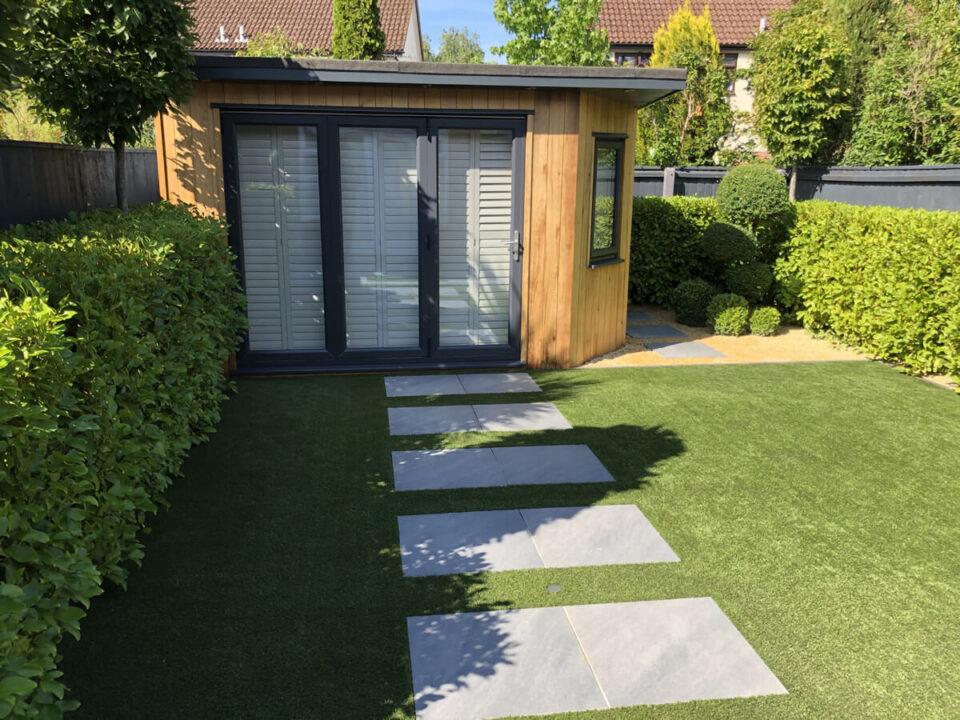Using Colours and Patterns to Enhance Your Garden Room

You’re about to transform your garden room into a vibrant sanctuary. Imagine an explosion of colours, patterns that captivate, and a space that truly reflects you. Let’s dive into the world of colour schemes, learn how to use them for mood enhancement, and discover the magic of patterns. You’ll learn how to create contrast, find harmony, and draw inspiration from real-life transformations. Ready to discover the potential of your garden room? Let’s start this exciting journey together.
Key Takeaways
- Primary colours (red, yellow, and blue) and complementary colours create striking contrasts when used together.
- Colours can influence mood and create a specific atmosphere, with colours opposite each other on the colour wheel creating a vibrant feel and colours adjacent to each other creating a soothing effect.
- A colour palette for a garden room should consist of one main colour and two others that blend together, and plant choices should reflect the colour palette for a harmonious blend.
- Incorporating patterns in the design of a garden room enhances its visual appeal, with different patterns bringing the chosen colour scheme to life.
Understanding Garden Room Colour Schemes
Before diving into the practical application of colours in your garden room, it’s essential you get a solid grasp on colour schemes, particularly in terms of the colour wheel. As a garden designer, you know that primary colours are red, yellow and blue.
Complementary colours are found directly opposite each other on the colour wheel and when used together, they create a striking contrast. Use colour theory to understand how colours interact, influence each other, and contribute to the overall landscape design.
Selecting Colours for Mood Enhancement
When you’re selecting colours for your garden room, it’s crucial to consider how different hues can influence mood and create a specific atmosphere. The key is to use different colours opposite each other on the colour wheel for a vibrant feel, or adjacent to each other for a soothing effect.
Your colour palette should consist of one main colour, and two others that blend together. Your plant choices should reflect this palette, ensuring a harmonious blend of colours and patterns.
Here’s a guide to help you:
| Colour | Mood Enhancement |
| Blue | Calming, best in shadow |
| Red | Energising, promotes activity |
| Green | Restful, connects us to nature |
Always consider your garden in terms of colour combinations for a cohesive design that promotes mood enhancement.
Incorporating Patterns in Garden Room Design
In addition to colour, incorporating various patterns in your garden room’s design can greatly enhance its visual appeal and create a captivating atmosphere. Use different patterns to bring your chosen colour scheme for your garden to life.
Experiment with three secondary colours, such as blue and orange, or yellow and purple, to create a contrasting, vibrant effect. For a more harmonious look, choose colours that are closely related, like blue and purple. Including plants that reflect these colours can enhance your outdoor living space.
Choose patterns thoughtfully to complement the colours and create a visually stimulating environment. The right mix of colours and patterns can transform your garden room into a beautiful, inviting oasis.
Strategies for Contrast and Similarities
You’ve got a plethora of strategies to play with when it comes to using contrast and similarities in your garden room’s colour scheme.
Start by selecting plants with colours that contrast or complement each other. For instance, pairing the vibrant yellow of marigolds with the deep blue of a delphinium creates a powerful visual impact. Orange and blue also make for great contrasting focal points.
On the flip side, using different tints and shades of the same colour, like varying hues of green, can bring a sense of tranquillity.
Remember, too much similarity can be dull, so don’t be afraid to shake things up.
With a little creativity, your garden room won’t only be a place to grow plants, but a 64-colour masterpiece.
Conclusion
So, you see, using colours and patterns effectively can truly transform your garden room.
Whether it’s through contrasting colours for high impact, similar hues for a cohesive feel, or incorporating patterns for visual interest, your choices can enhance the overall aesthetic.
Remember, it’s about creating a space that reflects your taste and mood.
So, get creative, have fun with it, and watch your garden room bloom into a beautiful sanctuary.

